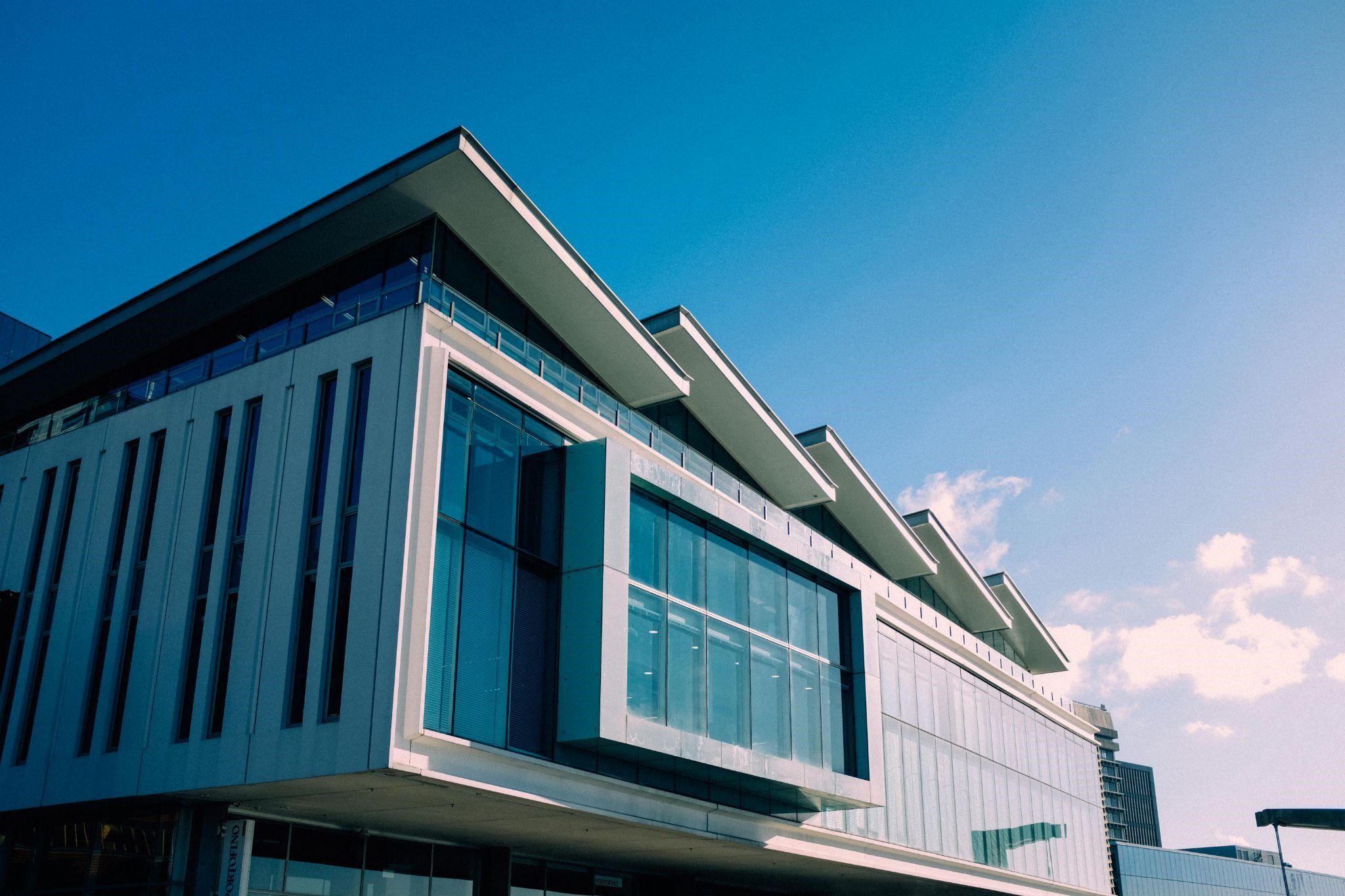Maintaining your commercial roof is crucial for the longevity and efficiency of your building. Proper maintenance can prevent costly repairs, extend the lifespan of your roof, and ensure the safety of your property and its occupants. In this guide, we’ll explore essential maintenance tips for commercial roofing services, covering inspections, repairs, cleaning, and more. Whether you manage a warehouse, office building, or retail space, these tips will help you keep your roof in top condition.
1. Regular Roof Inspections
Overview: Regular inspections are the cornerstone of a robust roof maintenance program. They help identify issues before they become major problems.
Tips:
- Schedule Biannual Inspections: Conduct inspections twice a year, in the spring and fall, to assess the roof’s condition.
- Post-Storm Checks: Inspect the roof after severe weather events to identify damage from wind, hail, or heavy rain.
- Professional Inspections: Hire a professional roofing contractor to perform detailed inspections, as they have the expertise to spot subtle issues.
Benefits:
- Early Detection: Catch problems early to prevent extensive damage and costly repairs.
- Peace of Mind: Regular inspections provide assurance that your roof is in good condition.
- Compliance: Ensures the roof meets local building codes and regulations.
2. Prompt Repairs
Overview: Addressing roofing issues promptly can prevent minor problems from escalating into major repairs.
Tips:
- Fix Leaks Immediately: Water infiltration can cause significant damage to the building’s structure and interior.
- Repair Damaged Membranes: Address any tears, punctures, or blisters in the roofing membrane to maintain its integrity.
- Replace Missing Shingles or Tiles: For buildings with shingle or tile roofs, replace any missing or damaged components promptly.
Benefits:
- Cost Savings: Timely repairs are usually less expensive than extensive damage repair.
- Longevity: Keeps the roof in optimal condition, extending its lifespan.
- Safety: Prevents hazards such as water damage and structural issues.
3. Roof Cleaning
Overview: Regular cleaning removes debris and prevents the buildup of materials that can damage the roof.
Tips:
- Remove Debris: Clear leaves, branches, and other debris from the roof and gutters to prevent water accumulation and blockages.
- Clean Mold and Algae: Use appropriate cleaning solutions to remove mold, algae, and moss, which can deteriorate roofing materials.
- Pressure Washing: For some roofing types, professional pressure washing can effectively clean the surface without causing damage.
Benefits:
- Prevents Damage: Reduces the risk of damage from accumulated debris and organic growth.
- Aesthetic Appeal: Keeps the roof looking clean and well-maintained.
- Efficiency: Maintains the roof’s reflective properties, improving energy efficiency.
4. Gutter and Drain Maintenance
Overview: Proper gutter and drain maintenance are essential for effective water management and roof protection.
Tips:
- Regular Cleaning: Clean gutters and downspouts regularly to prevent blockages and ensure proper drainage.
- Check for Damage: Inspect gutters and downspouts for cracks, leaks, and other damage, and repair or replace as needed.
- Install Guards: Consider installing gutter guards to minimize debris buildup and reduce cleaning frequency.
Benefits:
- Prevents Water Damage: Ensures efficient water drainage, reducing the risk of water damage to the roof and building.
- Extends Gutter Life: Regular maintenance extends the lifespan of gutters and downspouts.
- Safety: Prevents overflows that can create slip hazards around the building.
5. Roof Coatings
Overview: Applying roof coatings can enhance the durability and performance of your commercial roof.
Tips:
- Choose the Right Coating: Select a coating that is compatible with your roofing material and provides the desired benefits, such as UV protection or waterproofing.
- Regular Application: Follow the manufacturer’s recommendations for reapplying roof coatings to maintain their effectiveness.
- Professional Application: Hire a professional roofing contractor to apply the coating to ensure proper coverage and adherence.
Benefits:
- Extended Lifespan: Protects the roof from UV rays, weather damage, and other elements, extending its lifespan.
- Energy Efficiency: Reflective coatings can reduce heat absorption, lowering cooling costs.
- Cost Savings: Reduces the need for frequent repairs and maintenance.
6. Proper Ventilation
Overview: Adequate ventilation is crucial for preventing moisture buildup and maintaining a healthy roof system.
Tips:
- Install Ventilation Systems: Ensure your roof has proper ventilation systems, such as ridge vents, soffit vents, or turbine vents.
- Check for Blockages: Regularly inspect vents for blockages or damage and clear any obstructions.
- Balanced Ventilation: Maintain a balance between intake and exhaust vents to promote proper airflow.
Benefits:
- Moisture Control: Reduces the risk of moisture buildup, which can lead to mold growth and structural damage.
- Temperature Regulation: Helps regulate the building’s temperature, improving energy efficiency.
- Prolonged Roof Life: Prevents premature aging of roofing materials caused by excessive heat and moisture.
7. Flashing Maintenance
Overview: Flashing is a critical component that prevents water infiltration at roof joints and penetrations.
Tips:
- Regular Inspections: Inspect flashing around chimneys, skylights, vents, and other penetrations for signs of damage or wear.
- Seal Cracks: Repair any cracks or gaps in the flashing to maintain a watertight seal.
- Replace Damaged Flashing: Replace flashing that is significantly damaged or corroded to ensure effective water protection.
Benefits:
- Leak Prevention: Maintains a watertight barrier, preventing leaks and water damage.
- Structural Integrity: Protects the building’s structural components from water infiltration.
- Cost Savings: Reduces the likelihood of extensive water damage and costly repairs.
8. Snow and Ice Removal
Overview: In colder climates, snow and ice accumulation can pose significant risks to your commercial roof.
Tips:
- Safe Removal: Use safe methods to remove snow and ice, such as roof rakes or professional snow removal services.
- Monitor Weight: Be aware of the weight of snow and ice on your roof and take action if it exceeds safe limits.
- Prevent Ice Dams: Install heat cables or improve insulation to prevent ice dams, which can cause water backup and damage.
Benefits:
- Prevent Structural Damage: Reduces the risk of structural damage caused by excessive weight and ice dams.
- Safety: Ensures the safety of building occupants by preventing roof collapses and ice fall hazards.
- Longevity: Protects the roof’s integrity and extends its lifespan.
9. Tree Maintenance
Overview: Trees near your commercial building can impact the health of your roof.
Tips:
- Trim Branches: Regularly trim branches that overhang the roof to prevent damage from falling limbs and debris accumulation.
- Remove Hazardous Trees: Remove trees that pose a significant risk to your roof due to their proximity or condition.
- Monitor Growth: Keep an eye on the growth of trees near the building and take action as needed to mitigate risks.
Benefits:
- Damage Prevention: Reduces the risk of damage from falling branches and debris.
- Cleanliness: Prevents excessive leaf and debris buildup on the roof and in gutters.
- Safety: Minimizes the risk of trees causing structural damage during storms.
10. Professional Maintenance Contracts
Overview: Engaging in a professional maintenance contract can provide comprehensive care for your commercial roof.
Tips:
- Choose Reputable Contractors: Select a reputable roofing contractor with experience in commercial roofing maintenance.
- Regular Check-ups: Ensure the contract includes regular inspections, cleaning, and maintenance services.
- Customized Plans: Opt for a maintenance plan tailored to your roof’s specific needs and condition.
Benefits:
- Consistency: Regular maintenance ensures consistent care and timely detection of issues.
- Expertise: Professional contractors have the expertise to identify and address problems effectively.
- Cost Savings: Reduces the likelihood of expensive repairs and extends the roof’s lifespan.
Conclusion
Maintaining a commercial roof requires diligence and regular attention to detail. By implementing these maintenance tips, you can ensure your roof remains in optimal condition, providing reliable protection and performance for your commercial property. Regular inspections, prompt repairs, thorough cleaning, and professional maintenance contracts are all essential components of a successful roof maintenance strategy. Investing time and resources in proper roof care not only extends the lifespan of your roof but also enhances the safety and value of your commercial building.
By staying proactive and addressing potential issues early, you can avoid costly repairs and ensure your roof continues to perform efficiently. Whether you manage a small retail space or a large industrial facility, these maintenance tips will help you protect your investment and maintain a safe, functional, and energy-efficient roofing system.



